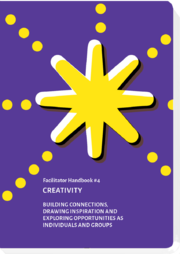Contents
Goal
- Participants identify diverse options.
- A wide variety of resources, especially non-financial,are taken into consideration for civic involvement and activity.
- Participants reflect on diverse ways they might have social impact.
- They evaluate and assess ideas.
Steps
The trainer takes a symbolic amount of money as an example – 50 EUR for instance (you can also use a smaller amount in your currency if you wish) – and asks for ideas about what one can do with the set amount of money. Participants brainstorm possible project ideas and develop a concept consisting of goals, methods, and resources. The trainer emphasizes monetary and non-monetary sources for fundraising, encouraging participants to become independent project designers.
1. Explanation of the task
Make a suggestion of what you can change with 50 € in a day/in two hours/in two days in your environment/on a specific issue/in your university/... Announce that the winners will receive a prize.
2. Ideas
Participants divide into teams and plan their concepts.
3. Selection
Afterward, all ideas will be presented and all the participants will vote for the best two or three concepts. To the winners' surprise they will actually receive the sum of 50 € to implement the selected project ideas.
Reflection:
- How was the process?
- How would you describe your strategy and the theory of change that you came up with?
- What influence does the 50 EUR have on the impact?
- What can you do with limited financial resources?
- What would motivate you and others to participate in this activity?
- If you were to receive ten times more money, how would your theory of change shift?
Handbook for Facilitators: Creativity Handbook
This text was published in: N. Zimmermann (ed.), E. Leondieva (ed.), M. Gawinek-Dagargulia (ed.) (2018). Creativity Handbook. Building connections, drawing inspirations & exploring opportunities as individuals & groups.Competendo Handbook for Facilitators.

Nils-Eyk Zimmermann
Editor of Competendo. He writes and works on the topics: active citizenship, civil society, digital transformation, non-formal and lifelong learning, capacity building. Coordinator of European projects, in example DIGIT-AL Digital Transformation in Adult Learning for Active Citizenship, DARE network.
Blogs here: Blog: Civil Resilience.
Email: nils.zimmermann@dare-network.eu
Experience
This method illustrates on a small scale what happens on a larger scale in successful initiatives. Beginning with personal individual motivations – drawing from all kinds of support – then implementing a concrete small initiative. The initiative's success does not depend on the initial 50€. A smaller amount in another currency might be even more symbolic to your particular participants.







